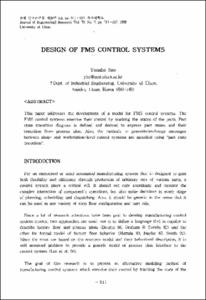다공질 TiNi 형상기억합금의 고온자전합성에 관한 연구
- Abstract
- 고온자전합성법을 이용하여 다공질 TiNi 금속간화합물을 제조하였다. 합성반응에 미치는 원료분말의 특성과 성형체 밀도, 점화온도 등의 영향을 생성물의 미세조직 관찰과 상분석, 기공도 및 기공구조 분석을 통하여 조사하였다.
다양한 원료분말을 사용하여 이들의 조합을 달리하여 준비한 혼합분말에 대한 반응 결과, 반응을 일으키는 최소점화온도는 280-500℃의 넓은 온도 범위로 확인되었으며, Hunter법으로 제조된 Ti 원료분말과 카르보닐 Ni 원료분말을 혼합한 경우에 가장 안정된 반응거동과 양호한 기공구조를 나타내었다. 제조된 반응생성물의 상분석 결과 단상의 TiNi와 제2상으로Ti₂Ni, TiNI₃등이 관찰되었으며, 제2상은 점화온도가 높아짐에 따라 감소하였다. 점화온도의 증가에 따라 기공의 크기도 감소하였으며 그 분포가 균일하여짐을 확인하였다.
Porous TiNi intermetallic compound was produced by SHS(Self-propagating High-temperature Synthesis). Effects of starting powder characteristics, green density and ignition temperature on synthesis reaction were investigated through microstructural observation, phase analysis, porosity and pore structure of reacted specimens.
Minimum ignition temperature for a propagation of thermal wave front ranged from 280 to 500℃ which varied according to starting powder characteristics. Mixtures of Ti produced by Hunter process and carbonyl Ni powders showed a stable reaction behavior and a good pore structure. From the results of XRD phase analysis TiNi was confirmed as a major phase. Additionally, Ti₂Ni and TiNi₃phases were also detected as second phases. The amount of teh second phases decreased with increasing ignition temperature which resulted also in a decrease of pore size and uniform distribution of pores.
Porous TiNi intermetallic compound was produced by SHS(Self-propagating High-temperature Synthesis). Effects of starting powder characteristics, green density and ignition temperature on synthesis reaction were investigated through microstructural observation, phase analysis, porosity and pore structure of reacted specimens.
Minimum ignition temperature for a propagation of thermal wave front ranged from 280 to 500℃ which varied according to starting powder characteristics. Mixtures of Ti produced by Hunter process and carbonyl Ni powders showed a stable reaction behavior and a good pore structure. From the results of XRD phase analysis TiNi was confirmed as a major phase. Additionally, Ti₂Ni and TiNi₃phases were also detected as second phases. The amount of teh second phases decreased with increasing ignition temperature which resulted also in a decrease of pore size and uniform distribution of pores.
- Issued Date
- 1999
- Type
- Research Laboratory
- Alternative Author(s)
- Lee, Seung-Hae; Kim, Ji-Soon; Kwon, Young-Soon
- Publisher
- 공학연구논문집
- Language
- kor
- Rights
- 울산대학교 저작물은 저작권에 의해 보호받습니다.
- Citation Volume
- 30
- Citation Number
- 2
- Citation Start Page
- 297
- Citation End Page
- 313
- Appears in Collections:
- Research Laboratory > Engineering Research
- 파일 목록
-
-
Download
 000002025291.pdf
기타 데이터 / 300.1 kB / Adobe PDF
000002025291.pdf
기타 데이터 / 300.1 kB / Adobe PDF
-
Items in Repository are protected by copyright, with all rights reserved, unless otherwise indicated.